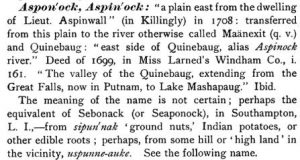 A friend from my hometown of Putnam, Connecticut posed a question on Facebook about what the word “Aspinock” literally means. Putnam was incorporated in 1855; in earlier years it had been known as Aspinock, but it was later named Putnam after General Israel Putnam of the Revolutionary War. Our local historical society remains the Aspinock Historical Society after this “original” town name. Continue reading “Algonquinization?”
A friend from my hometown of Putnam, Connecticut posed a question on Facebook about what the word “Aspinock” literally means. Putnam was incorporated in 1855; in earlier years it had been known as Aspinock, but it was later named Putnam after General Israel Putnam of the Revolutionary War. Our local historical society remains the Aspinock Historical Society after this “original” town name. Continue reading “Algonquinization?”
Monthly Archives: February 2017
The house by the side of the road
 When my brother was little (long ago and not far away), he would lull himself to sleep by reciting the phrase on an antique cross-stitched sampler of a house which hung on the wall over his bed: “Let me live in a house by the side of the road and be a friend to man.” This simple sampler makes me think about how many things change yet remain the same in my neighborhood.
When my brother was little (long ago and not far away), he would lull himself to sleep by reciting the phrase on an antique cross-stitched sampler of a house which hung on the wall over his bed: “Let me live in a house by the side of the road and be a friend to man.” This simple sampler makes me think about how many things change yet remain the same in my neighborhood.
I have come to understand that my family history is intrinsically linked to the houses my ancestors built as well as the area in which they built them, two inseparable elements which complement each other, and which provide fodder for my “family stories.” Continue reading The house by the side of the road
Boston riches
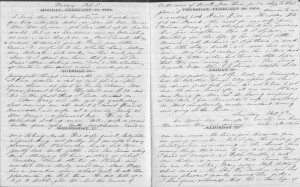
Certain diaries, and their authors, become short-hand for a time and place: Samuel Pepys’s diary of seventeenth-century London, for example, or Anne Frank’s diary of wartime Amsterdam. The diaries of Philip Hone and George Templeton Strong are often invoked to cover the first half of the nineteenth century in New York; for the Civil War years, readers turn to Mary Boykin (Miller) Chesnut’s Diary from Dixie (1905). Although rich in literary resources, Boston lacks such a diary for the mid-Victorian period. Boston men and women of the period wrote enduring works of fiction and non-fiction, but for this generation no Boston diarist has emerged to capture the tone of the times. Continue reading Boston riches
Abandoning America
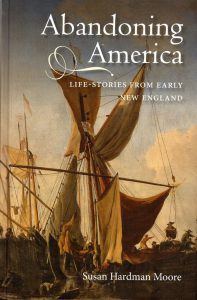 Sir Richard Saltonstall came to New England with the Winthrop Fleet in 1630. He left in 1631. His oldest son, Richard Saltonstall, also returned to England in 1631, where he got married in 1633 and then brought his wife and their nine-month-old daughter back to New England. The younger Saltonstall was active, sometimes controversially, in the Massachusetts government and travelled back and forth between the colonies and old England over the next six decades. In 1643 he took his wife, Muriel, and all of his daughters home to England for the benefit of her health (which apparently was affected by a deep distaste for the New World), leaving only his youngest son Nathaniel to settle permanently in Massachusetts. After more trips back and forth, Richard returned to England for good in 1688. “Richard never really became a New Englander.” Continue reading Abandoning America
Sir Richard Saltonstall came to New England with the Winthrop Fleet in 1630. He left in 1631. His oldest son, Richard Saltonstall, also returned to England in 1631, where he got married in 1633 and then brought his wife and their nine-month-old daughter back to New England. The younger Saltonstall was active, sometimes controversially, in the Massachusetts government and travelled back and forth between the colonies and old England over the next six decades. In 1643 he took his wife, Muriel, and all of his daughters home to England for the benefit of her health (which apparently was affected by a deep distaste for the New World), leaving only his youngest son Nathaniel to settle permanently in Massachusetts. After more trips back and forth, Richard returned to England for good in 1688. “Richard never really became a New Englander.” Continue reading Abandoning America
‘A great thing for Ned Boit’
[Author’s note: This series, on Mrs. Gray’s reading habits, began here.]
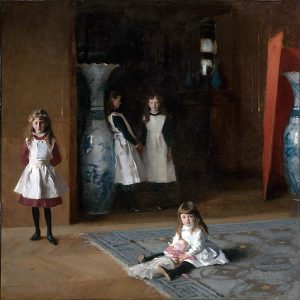
As in 1860, the Gray family[1] planned to spend the hot summer months of 1864 in Manchester, north of Boston. In the meantime, there was a grand society wedding to attend; Dr. Gray had a fainting spell following an afternoon party; and the news of the sinking of the Alabama made for serious reflection.
61 Bowdoin Street, Boston, Friday, 24 June 1864: We have secured rooms at Chase’s, quite near Mrs. Richards’s cottage in Manchester, which will be very pleasant for Mary [Gray] & Elise [Richards].[2] The house accommodates only our party – a decided advantage – and they take us for $52,00cts a week – very reasonable as board goes now. I hope they won’t starve us on it! Continue reading ‘A great thing for Ned Boit’
Revolutionary privateering

In attempting to prove Revolutionary War service for a man from Norwich, Connecticut, who did not show up in any militia lists, pension records, war memorials, etc., I turned to the subject of privateering. According to the DAR Genealogy Guidelines, “privateers were privately owned, armed trading vessels, commissioned or issued letters of marque from either the Continental Congress or from individual provisional government[s] (sometimes by both) to capture enemy ships and goods. The bounty or prize was divided by the officers and seamen and the governing body that authorized the privateering. Bounties made privateering very profitable and provided much needed supplies to the American forces. The Continental Congress officially authorized privateering for the war on 23 March 1776, although some states had already initiated privateering prior to that date.”
Norwich, located at the head of the Thames River, was a center for ship-building; the largest shipping firm in Norwich was Howland & Coit. Vessels traveled down the river and then sailed from New London harbor. Continue reading Revolutionary privateering
New places
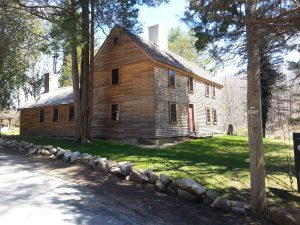
To me, one of the best things about genealogy is learning that you have shared a place with an ancestor. Perhaps you passed through the town where they once lived, or maybe your commute to work takes you by their former home. Discoveries like this make genealogy that much more personal.
Recently, when I was learning more about Mabel Winters, my great-grandmother, and her family in Nova Scotia, I ran into a name that was very familiar to me – Lufkin. Continue reading New places
Fudging facts

Alternate dates of birth for our ancestors, perhaps ranging over several years, are common for many of us, and the reasons can vary considerably. A recent example in my own research came in the form of a deliberate change of birth date, with the sole intention to make the subject appear younger than her husband. Continue reading Fudging facts
As is
 Genealogists spend a lot of time correcting published genealogical works, which is especially ironic when it comes to Clarence Almon Torrey’s New England Marriages Prior to 1700, published by NEHGS and the work upon which the Early New England Families Study Project is based.
Genealogists spend a lot of time correcting published genealogical works, which is especially ironic when it comes to Clarence Almon Torrey’s New England Marriages Prior to 1700, published by NEHGS and the work upon which the Early New England Families Study Project is based.
We have constant inquiries about, and requests to fix, typographical mistakes and transcription errors in the Torrey database on AmericanAncestors.org, which is not really a “database” but an index to the images from the three-volume print publication, also published by NEHGS. Continue reading As is
ICYMI: Consider the siblings
[Editor’s note: This blog post originally appeared in Vita Brevis on 27 November 2015.]
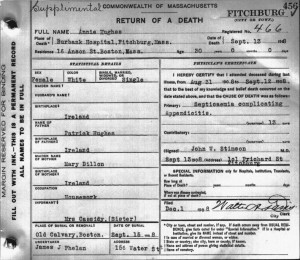 For the last several months, I have been trying to determine the origins of each of my mother’s Irish ancestors. In a previous post, I mentioned my success in locating the origins of my Kenefick ancestors; however, I have been having trouble with some ancestors with much more common surnames.
For the last several months, I have been trying to determine the origins of each of my mother’s Irish ancestors. In a previous post, I mentioned my success in locating the origins of my Kenefick ancestors; however, I have been having trouble with some ancestors with much more common surnames.
The earliest record I have for my maternal great-great-grandparents Patrick Cassidy and Mary Hughes is their marriage record, dated in Boston 28 November 1888. Continue reading ICYMI: Consider the siblings